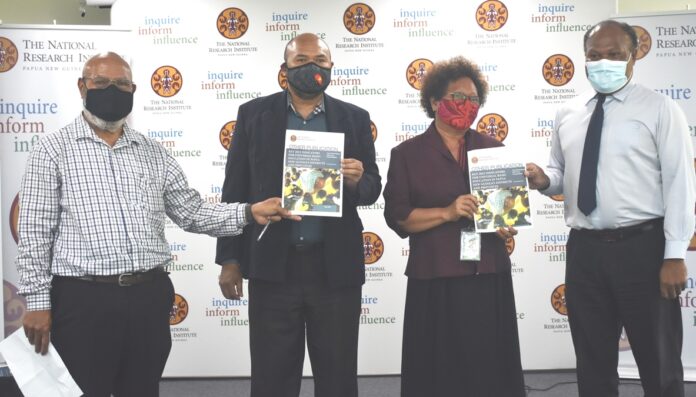
THE Papua New Guinea National Research Institute (PNG NRI) has officially launched the Key 2015 indicator for Universal Basic Education in PNG’s Districts and Provinces today.
The acting PNG NRI Director Dr. Osborne Sanida along with the authors of the document Dr. Thomas Webster, Dr. Esther Lavu and Dr. Pater Michael Magury did the launch at the NRI headquarter in Port Moresby.
The Universal Basic Education (UBE) indicator is part of a bigger program called the National basic services indicators at NRI.
UBE concerns on three basic indicators namely Access Rates, Retention Rates and Examination Pass. This is to measure and see if PNG is improving or not.
“The indicators inform us on how many of the school age (six year old) children are entering first year of schooling from elementary and continue on to primary and how much learning was done when completing grade 8 examinations for basic education,” Doctor Sanid said.
He said this is to improve the foundation of education and development in the country.
“UBE is the foundation in which future development of PNG will be built on. It empowers every citizens of the country to improve their lives as well as contribute as a useful member of the society, and PNG government needs to give priority in providing basic education opportunities to all citizens.
“If we do not achieve UBE, all other development aspired in the vision 2050 and other plans of government will never be achieved,” Sanida said.
He added that the future development of the country lies on the achievement of UBE and three areas that are discussed.
The indicators can be used to inform decision makers on UBE and what the decision makers can do to improve the country.
This will also encourage districts and provinces to take the responsibility by comparing their outcome with other provinces and improve on them.
Moreover, Dr. Sanida said a further updated report titled “Key 2029 indicators for PNG’s Districts and Provinces” will be released in June 2021.
